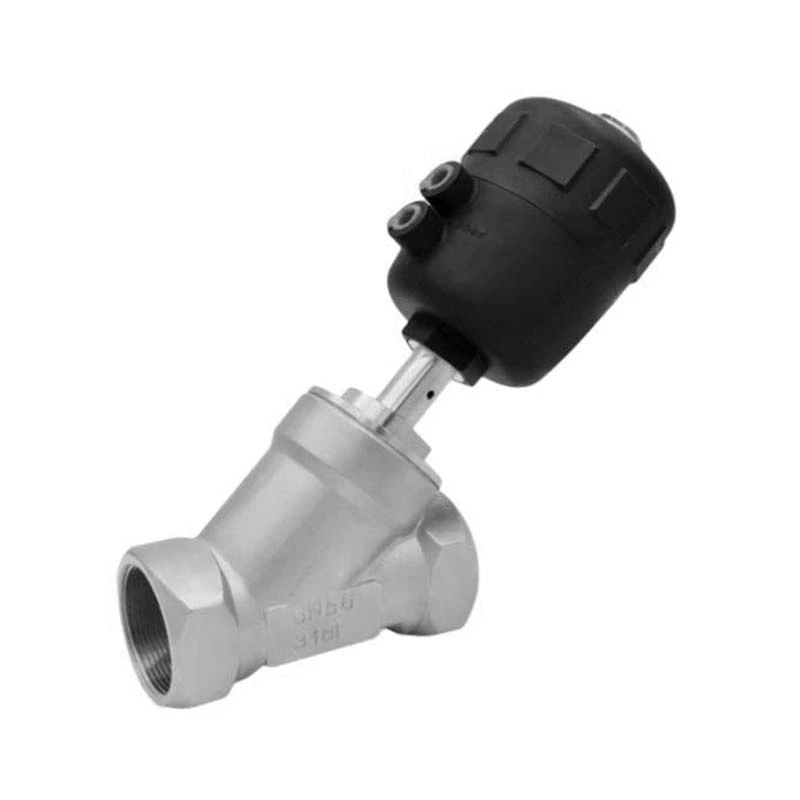Angle Seat Valve Working Principle
A Angle Seat Valve is a commonly used control valve that controls the flow of media through a pneumatic mechanism. It features a simple structure, high reliability, and fast response. So, what is the working principle of a pneumatic angle seat valve?
First, the working principle of a pneumatic angle seat valve can be divided into two parts: the valve body structure and the pneumatic actuator. The valve body structure is the main component of the pneumatic angle seat valve and consists of the valve body, valve core, and valve seat. When the pneumatic angle seat valve is closed, a seal is formed between the valve core and the valve seat, preventing the flow of media. When the pneumatic angle seat valve is open, the valve core separates from the valve seat, allowing media to pass smoothly through the valve body. This structure gives the pneumatic angle seat valve excellent sealing performance and flow control capabilities.
Second, the working principle of a pneumatic angle seat valve is closely related to the pneumatic actuator. The pneumatic actuator is the control part of the pneumatic angle seat valve and consists of a cylinder, piston, and air source interface. When air is supplied to the air source interface, gas enters the cylinder, pushing the piston to move, thereby opening or closing the valve core. The rapid response and reliability of the pneumatic actuator are key to ensuring the proper operation of pneumatic angle seat valves.
In general, the operating principle of a pneumatic angle seat valve can be simply summarized as controlling the opening and closing of the valve body through the pneumatic actuator, thereby controlling the flow of the medium. In practical applications, pneumatic angle seat valves can be combined with sensors, control systems, and other equipment to achieve automated control and are widely used in fluid control systems in industrial production.
In addition, pneumatic angle seat valves also have some special operating principles, such as the reverse action principle and the throttling principle. These principles are designed to meet the fluid control requirements of different operating conditions and improve the applicability and control accuracy of pneumatic angle seat valves.
In summary, the operating principle of a pneumatic angle seat valve is a complex system engineering involving multiple aspects, including valve body structure, pneumatic actuator, and control principles. Only by deeply understanding its operating principle can we better apply and maintain pneumatic angle seat valves and ensure their proper operation in industrial production.
